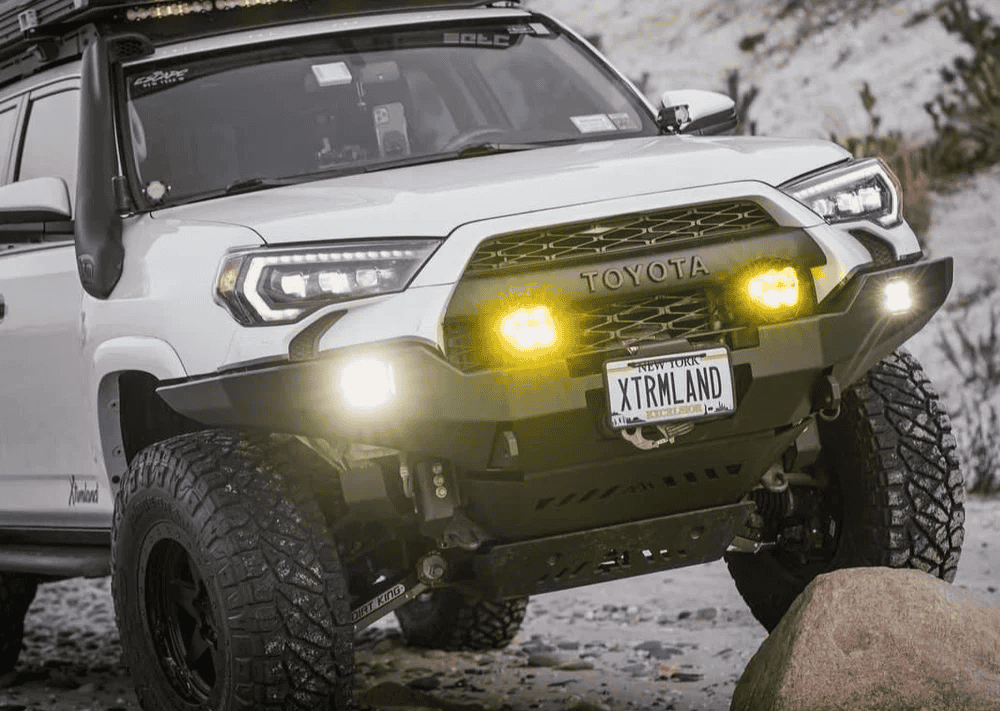Overland Vehicles

Every successful project begins with a clear mission. Decide where you will travel, how long you will stay out, and what conditions you expect. Desert tracks, high mountain passes, and forest service roads ask different things of a rig. Your route and season determine fuel range, cooling needs, insulation, and traction.
Select a platform that fits the mission rather than forcing the mission to fit the platform. Consider wheelbase, ground clearance, approach and departure angles, and available aftermarket support. Check payload against real numbers. Add up expected weights for people, fuel, water, armor, recovery gear, spares, and camping equipment. Compare that figure to the vehicle payload and gross rating with a safety margin so the vehicle remains stable and legal.
Match drivetrain and gearing to the terrain. Low range matters on slow technical climbs. A locking differential improves traction where one tire loses bite. Be realistic about tire size. Larger tires can add clearance, but they also change effective gearing, strain brakes, and add rotational mass that affects acceleration and cooling.
Define daily mileage, average speed, and terrain profile. This clarifies the balance between comfort, efficiency, and durability. High heat, deep sand, or long washboard sections require specific tire pressures and shock tuning.
Choose a wheelbase that gives interior space without creating a long rear overhang. Keep the center of gravity low by storing heavy items down and forward of the rear axle. Drivetrain choice should reflect terrain and weight, including the impact of added armor.
Break the plan into phases that deliver value at each step. Prioritize tires, suspension, and recovery tools over cosmetic items. A phased approach prevents scope creep and keeps the vehicle usable between upgrades.
Think in systems, not parts. Tires, suspension, steering, brakes, and armor interact. Upgrade as a matched set when possible. For example, when you increase tire size, evaluate spring rate, shock valving, and steering geometry to maintain control and ride quality. Calibrate alignment to the intended load state, not an empty vehicle on a shop floor.
Design the power system around actual consumption. Audit daily loads for a fridge, fans, lights, pumps, devices, and any air conditioning. Size the battery bank, alternator charging, solar input, and inverter output for your worst day, not your best. Protect wiring with proper fusing and cable management. Keep critical components serviceable and ventilated.
Plan water and storage with gravity, balance, and access in mind. Fixed tanks are efficient and quick to fill, while modular containers help with weight distribution and refilling flexibility. Use drawers and bins that lock and do not rattle. Secure everything so it stays put on corrugations.
Choose an all terrain or mud terrain pattern based on the mix of highway and trail. Pair tire size with spring rate and damping that accounts for constant load. Quality shocks manage heat on rough roads and protect components downstream.
Estimate amp hours per day with a margin for heat or cold. Combine alternator charging with solar to stabilize your state of charge during travel and camp days. Use a battery monitor to measure rather than guess.
Place heavy tanks and tools low and near the center. Keep emergency gear reachable with the tailgate closed. Label storage so you can find items in low light and during stressful moments.
Reliability comes from testing. Perform short shakedown trips on mixed terrain with the rig at full travel weight. Listen for new noises. Feel for heat in hubs, brakes, and gearboxes after long grades. Use a torque wrench to recheck fasteners on armor, racks, and suspension after the first few hundred miles.
Carry a thoughtful recovery kit. A quality jack, boards, a shovel, soft shackles, a rated rope, and gloves cover most situations. Protective equipment such as skid plates and high clearance bumpers prevent trip ending damage. Map redundancy helps too. Keep offline maps, paper backups, and a method to communicate beyond cell service.
Create a maintenance routine. Inspect tires, fluids, brake pads, and steering components at set intervals. Pack a spares kit for belts, fuses, hoses, hardware, and repair materials for tires and plumbing. Document your setup with photos and diagrams so you can troubleshoot quickly on the trail or explain an issue to a technician.
Choose recovery points rated for your vehicle. Train with your gear in a controlled environment. Protective plates and rock sliders save money by preventing damage to vital systems.
Plan an interior that works while parked and while moving. Clear walkways, safe seating, and proper ventilation lower fatigue. Use latches that stay closed on rough roads.
Run a trip, take notes, and change what slows you down. Update your packing list and tool kit. Keep a log so you repeat wins and avoid former mistakes.
Consider partnering with a shop that understands this process end to end. If you want a cohesive rig guided by proven practices, explore our overland services and see real world builds on our page for overland rigs. When you have a clear plan and prefer expert installation of suspension, armor, and systems, review our custom overland upfit options. Curious how we approach listening, design, and build quality from first call to handoff at our Fayetteville shop, read why choose OZK Customs and see how we treat every mile of your journey as part of the build.
Ready to turn your plan into a dependable rig? Our team designs and builds overland systems that work as one, from suspension and armor to power and water. Tell us how you travel, and we will map a build that fits your route, budget, and timeline.
ADDRESS:
6159 E Huntsville Rd, Fayetteville, AR 72701
PHONE:
(479) 326-9200
EMAIL:
info@ozkvans.com